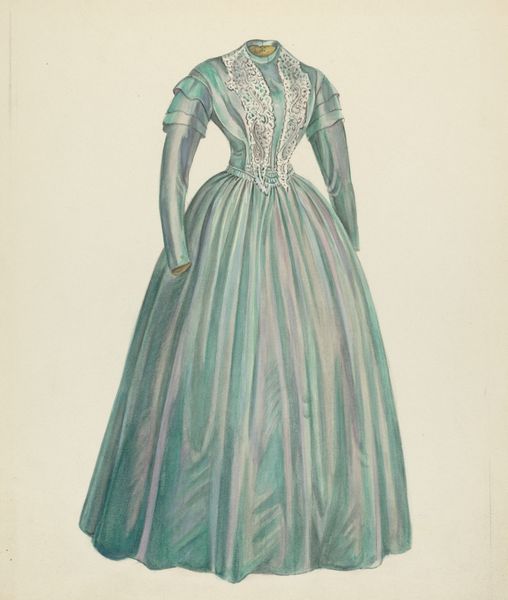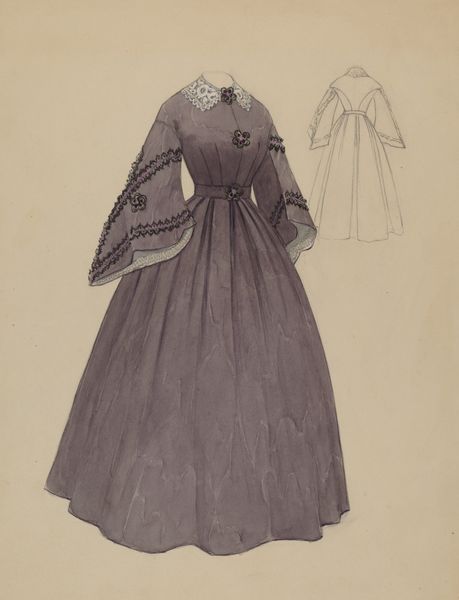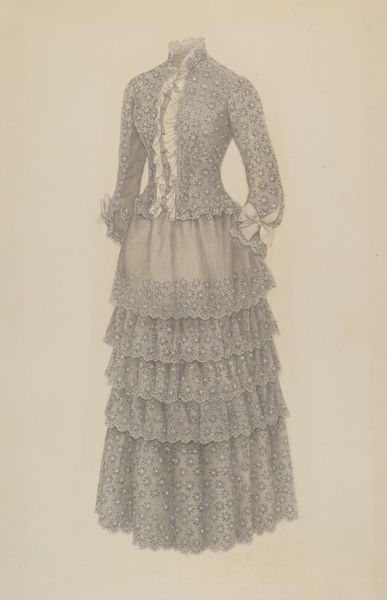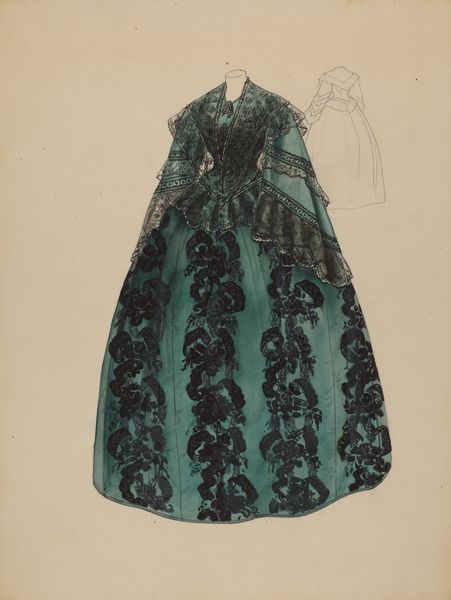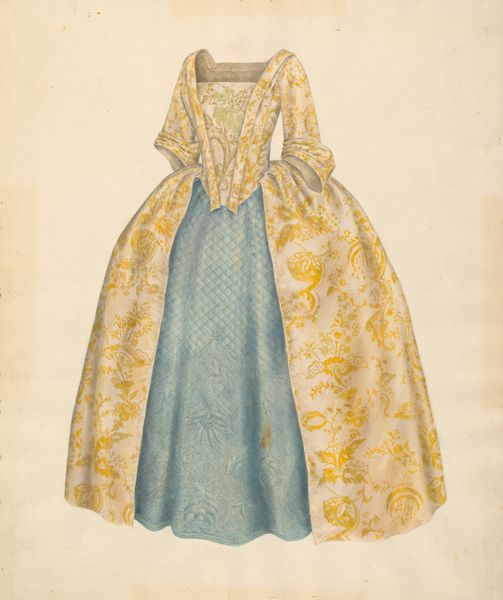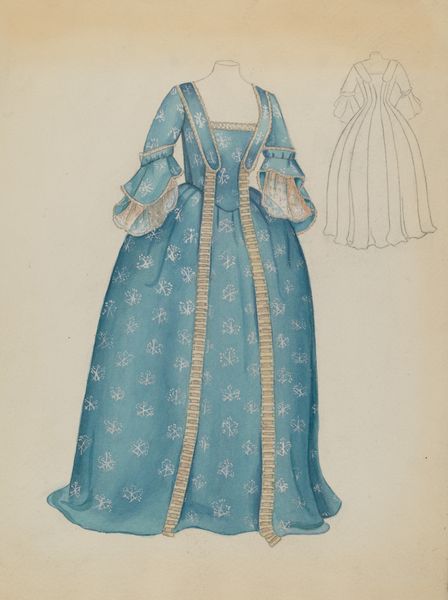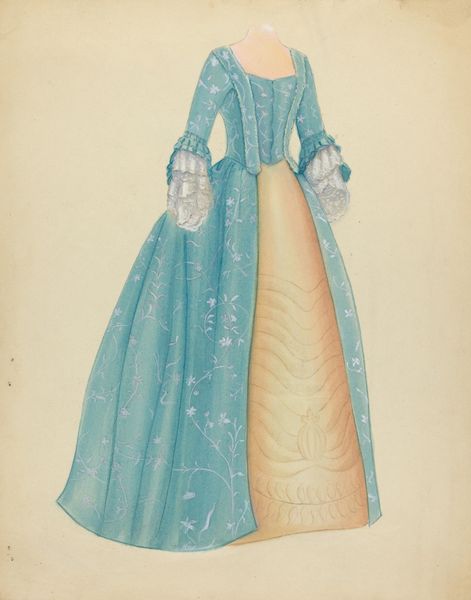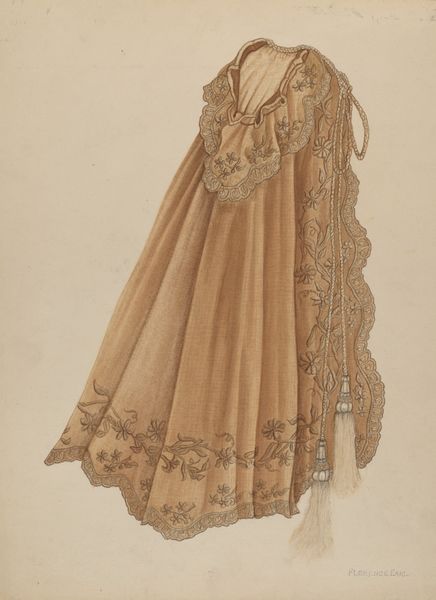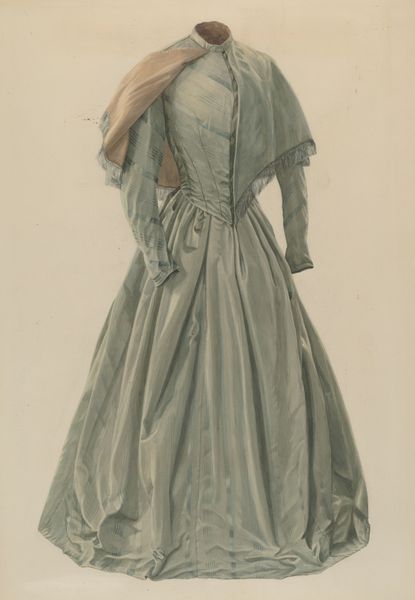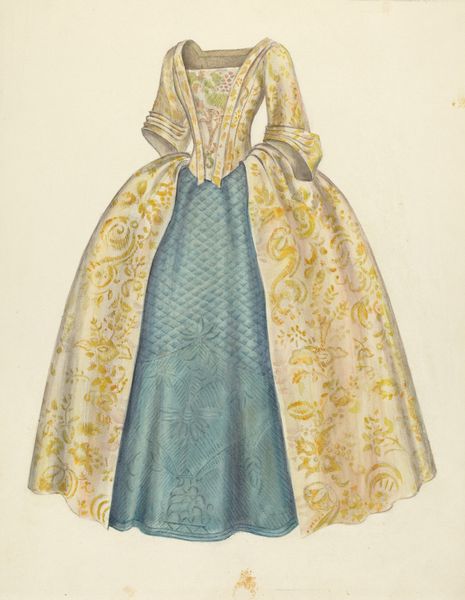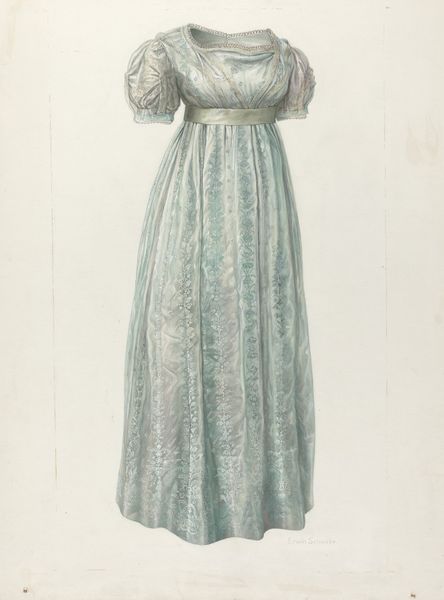
drawing, watercolor
#
portrait
#
drawing
#
watercolor
#
academic-art
Dimensions: overall: 40.8 x 30.7 cm (16 1/16 x 12 1/16 in.)
Copyright: National Gallery of Art: CC0 1.0
Curator: We're looking at "Afternoon Dress," a watercolor and drawing piece from around 1940, by Nancy Crimi. Editor: It has a rather demure sensibility, wouldn’t you agree? The composition emphasizes this contained form, its flowing lines and pale blue almost dreamlike. Curator: Absolutely, but think about what the dress itself represents— the constricting social expectations of women in that era. The high collar, long sleeves... It’s pretty, yes, but also a cage. Editor: I can see that perspective, certainly, but isn’t there beauty in the structure? The artist clearly understood the intricacies of fabric, the way it gathers and falls. The visual rhyme between the frills at the shoulder and the lacy pattern is particularly well handled, and I would assume is supposed to draw the viewer's attention. Curator: Yes, the dress is well executed and even visually striking, but let’s remember the limitations placed upon women at the time, limited choices, expectations to conform. The artist may have intended a beautiful representation, but as viewers, we can look beyond the surface to consider power, patriarchy and social justice through sartorial choices. Editor: Even so, I am intrigued by Crimi’s almost abstracted rendition, it feels like she is using the image of dress not as documentation of history but a kind of symbol in itself. Semiotically, it gestures towards a wider sign system related to form, figure and color more so than social constructs of identity alone. Curator: Which is why approaching it through multiple lenses—feminist theory, art history, design principles—creates richer layers of interpretation. Editor: Indeed, and it leaves me wondering about other meanings of “Afternoon Dress”, it is in many respects, so much more than dress or afternoon and deserves much greater readings. Curator: I couldn't agree more. Viewing it through the intersectional narratives provides just such additional reading of social constraints versus individual freedom.
Comments
No comments
Be the first to comment and join the conversation on the ultimate creative platform.

